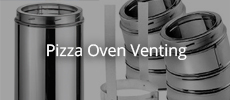To maintain the heat I made a door using leftover from my new solar panels array, steel 5cm/5cm filled with leftover of the ceramic blanket. The upper part is removable, the purpose is to use the chimney as a smoker with a piece of rebar on the top to hang meat or sausages... The air inlet is reduced to reduce the oxygen and produce smoke. I'll need to pay attention to not fully open the door when it's used as a smoker, causing the fire to erupt suddenly. I built some fire and it seems to work properly.
Announcement
Collapse
No announcement yet.
Corner Pompei Oven following Forno Bravo instructions-Loei Thailand
Collapse
X
-
Continuing the previous post... It's a long process, I ordered some materials and a 20-litre stand mixer... It's a professional one made in China at the same price or even cheaper than some high-end household stand mixers...5 Photos
Leave a comment:
-
Good idea, I must have some leftover in my workshop. Thanks.Originally posted by david s View PostA similar idea is to use a length of plastic conduit as the arm of the IT. The plastic being easy to flex can be bent which shortens it enough for the plate, which holds the brick in place, to easily remove it without having to adjust anything. Then it springs back into shape ready for the next brick.
Leave a comment:
-
Thank you, unfortunately I can't read the remarks in red on your picture, but I can see the geometry in black. I simply followed the instructions of a guy who published the built of his outdoor kitchen on YouTube.Originally posted by UtahBeehiver View Postmost important is the projected line from the pivot point along the wood needs to intersect the center of the brick face, or you end up with stepping off the brick face as you move up in courses. The error is cumulative. I marked the attached picture for another builder years ago but is is similar to the IT you are considering using.
Artisan Made, he's also following the Forno Bravo design.
Leave a comment:
-
As I mentioned, the castor height is not a deal killer but most important is the projected line from the pivot point along the wood needs to intersect the center of the brick face or you end up with stepping of the brick face as you move up in courses. The error is cumulative. I marked the attached picture for another builder years ago but is is similar to the IT you are considering using.
https://community.fornobravo.com/fil...19&type=mediumLast edited by UtahBeehiver; 11-18-2023, 08:58 AM.
Leave a comment:
-
A similar idea is to use a length of plastic conduit as the arm of the IT. The plastic being easy to flex can be bent which shortens it enough for the plate, which holds the brick in place, to easily remove it without having to adjust anything. Then it springs back into shape ready for the next brick.
Leave a comment:
-
Thanks, that's why I used a thin piece of wood and not a large metal plate like on many IT designs I've seen on the forum. The pivot point of the caster is in the centre of the oven floor, and the distance between it and the bolt holding the piece of wood is constant. Regardless, I try to keep things achievable at my level and not compete with the assembly precision of a Swiss chronograph. The wooden piece is attached with screws, so it will always be possible to adjust the length on the fly. I don't rule out using an inflatable gym ball for the last rows of the oven. I don't cut the firebricks these days because my wife has spread her rice harvest in the front courtyard to dry in the sun, and these cuts create a lot of dust. Thank you very much for your valuable and wise advice.
Leave a comment:
-
A couple comments on the IT. The pivot point should be at the floor level or as close as possible. This changes the dimension of the oven OD as you move up. Not a deal killer just something you need to be aware of and adjust as needed. Most important design issue is the pivot point along the wood stick needs to intersect the center of the dome brick. This makes the internal brick face perpendicular to the center of the floor. The error by the current set up is cumulative as you go up and causes the brick edge to start form a stepped edge. Last, make the wood rod adjustable in length is very helpful in adjusting for irregularities.
Leave a comment:
-
Today I made a simple, indispensable tool. Note the thin piece of wood to mark the length, this avoids all problems caused by angles. KISS.2 Photos
Leave a comment:
-
-
50/50 by volume dry fine sand and powdered clay.If the mix is wet a 50/50 mix will be too sticky and difficult to apply. It will also stick like crazy making any brick removal very difficult later if that is required. If used dry this is not a problem and being loose allows free movement of individual bricks that will have uneven thermal expansion. The finer clay particles fill the air spaces between the sand grains, reducing their movement and creating a denser layer.Last edited by david s; 07-28-2023, 05:48 PM.
Leave a comment:
-
Thanks, but I meant the oven floor, I am not that far.Originally posted by david s View PostAs the diameter of each row decreases as the dome rises, the angles that need to be cut get greater. If you own a wet saw this isn’t a problem, but if you have to hire one it is.
By the way, what sand/clay mix ratio do you recommend for the levelling layer between the floor bricks and the vermiculite insulation? Thanks.
I used the forum search engine and found numerous variations
1:1 and water
but I will follow your advice and won't use water
2:1 and even 3:1, on another website it was 2-4 sand :1 fire clay
someone on this forum mentioned having problems with the 1 :1 ratio
"03-19-2014, 01:26 AM
Re: 42" Started in Fountain Hills, Arizona
Also, some people have mentioned having difficulty with 1:1 ratio of fire clay:sand for the levelling of the hearth brick. You can make a leaner mix with no ill effects, the clay is there to add some adhesion when setting the brick, little more."Last edited by Garouda; 07-27-2023, 10:43 PM.
Leave a comment:
-
As the diameter of each row decreases as the dome rises, the angles that need to be cut get greater. If you own a wet saw this isn’t a problem, but if you have to hire one it is.
Leave a comment:






Leave a comment: